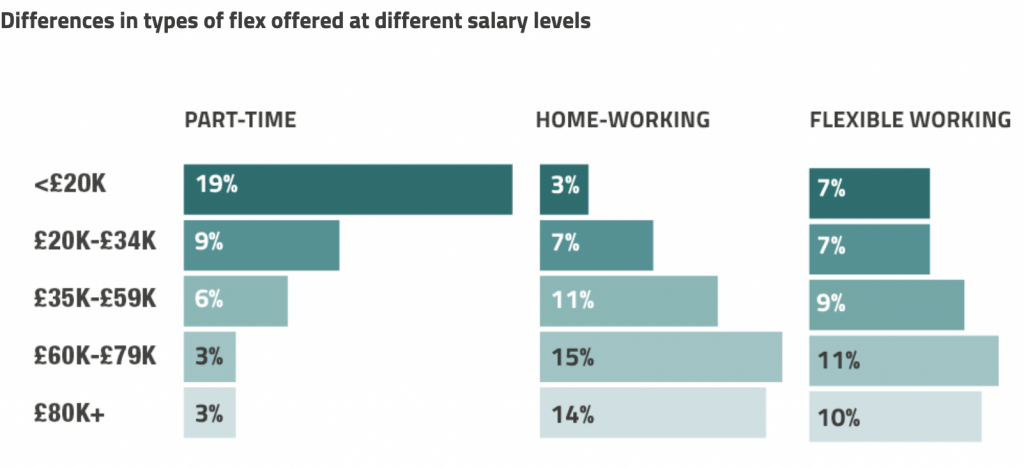Flexibility and careers
In the PP I argue that one of the key changes – if not the key change – needed for a fairer recognition of women’s competences is in the way we think about careers: getting away from the model of full-time continuous employment with progression along a linear ladder. Surely, you may say, this is disappearing out of the window – kept open to let the coronavirus out.
Well, Timewise has just published its annual review of flexible working. In 2020 there was a big jump in the overall proportion of jobs offered on a flexible basis, from 17% to 24%. Progress has not been sustained at the same rate, though the proportion has inched upwards to 26%.
The big story for me is in the breakdown of the types of flexibility by job category. The relevant chart is below:

As the report rightly observes:
There are disparities across salary levels that will be causing blocks in career progression for people who need flexibility. Part-time is common amongst the lowest paid jobs (perpetuating the stigma around part-time work) but is relatively rare in higher paid roles. Conversely, homeworking and flexible working are disproportionately offered at higher salary levels and are rarely offered in low-paid jobs.
No prizes for estimating what that means for the gender pay gap; and especially its implications for progression over time. This matters at all ages and stages. Given longer working lives, more and more people will want or need to depart from the full-time continuous model, and they will be discouraged by the penalisation of part-time work.
Timewise has a number of very sound recommendations, to employers and policy-makers. I’d like to suggest that an additional particular effort is made to promote part-time working to male employees; the realpolitik is that the more men go part-time the better that will be for its status – and so improve women’s careers.
